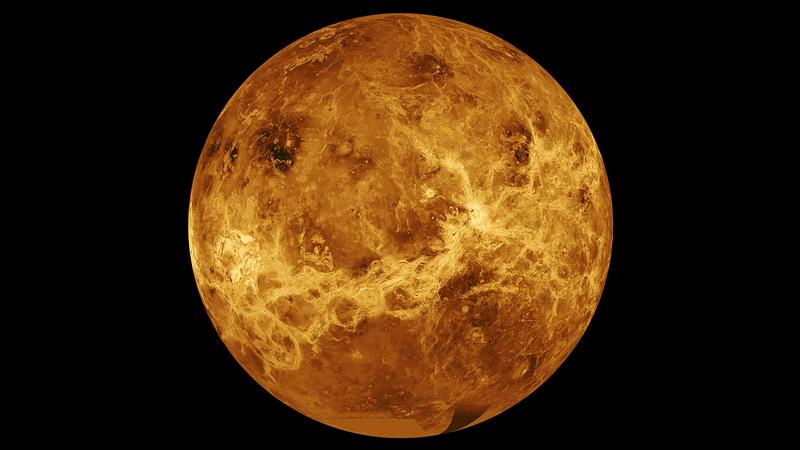
[ad_1]
Life on Venus a potentially stunning discovery

The UK Royal Astronomical Society on Monday held a press briefing announcing the discovery of phosphine in the high clouds of Venus. This made everyone sit up because phosphine is a gas that, on Earth, is almost exclusively produced by microbes.
First, how credible was the discovery from Venus?
The research was conducted by a team of astronomers and biochemists from renowned universities, including Cardiff (which led the work), Cambridge, and Massachusetts Institute of Technology. The resulting paper was simultaneously published in Nature Astronomy, one of the top journals in the world, vouching for its rigor. And, most importantly, the measurements that produced the stunning result were done at two different observatories; first in Hawaii, then in Chile at the ALMA Radio Telescope, one of the world’s top facilities in the field.
Evidently, the research was top notch and it was examined by many experts, some of them members of the team and others external to it.
Still, the discovery was so surprising that it produced a reaction of marked cautiousness from most astronomers. Why? Because Venus, with its hellish conditions, was the last place where anyone would have considered finding any kind of life, even microbial. And, further, because we have been burned before with incredible discoveries such as this that later turned out to have more mundane explanations.
Indeed, Venus has a constant temperature of about 450 degrees Celsius on its surface and a heavy atmosphere of carbon dioxide, producing a pressure 100 times stronger than that of our atmosphere and a runaway greenhouse effect. The phosphine, however, was discovered high in the atmosphere, about 50 km above the surface, where the temperature is much nicer, some 20 to 50 C. But those upper layers of the Venusian atmosphere are filled almost entirely with sulfur dioxide, a very corrosive acid. How, then, could any microbes live in such conditions?
Perhaps the phosphine had a more “natural” origin, i.e., produced by chemical reactions in the atmosphere, aided by phosphorus released from the surface (perhaps by volcanic activity) and with ultraviolet radiation coming in from the sun to supply the energy needed to make those reactions. After all, phosphine is a very simple molecule: One phosphorus atom and three hydrogen atoms. Interestingly, however, one of the research team members — a biochemist who specializes in this sort of question — did the calculations for more than 70 chemical ways to “naturally” produce phosphine and found that the total result was 10,000 times less than what had been measured. Hence, the biological conclusion.
But, as Carl Sagan famously said, “extraordinary claims require extraordinary evidence.” And, in science, a discovery, especially a major, stunning one such as this, must be confirmed by other researchers, preferably using different methods. No doubt others will promptly turn their telescopes toward Venus — a bright planet that can be seen by everyone in the early dawn these days — and perform analyses of the light received from it (reflected from the sun after selective absorption by its gases) and try to reproduce the result. More importantly, other researchers will want to think of whether any non-biological processes could explain the observations. And, best of all, it would be great if NASA or other space agencies could send probes plunging into the Venusian atmosphere, making in-situ measurements and perhaps even collecting samples to send back to Earth, where microbes could be searched for or further analyses performed.
Venus, with its hellish conditions, was the last place where anyone would have considered finding any kind of life, even microbial.
Nidhal Guessoum
This is an exciting result precisely because it calls for further research. It challenges our previous convictions (life couldn’t exist in such hellish environments, life likes water, preferably liquid, etc.). And it opens up vistas for young researchers not bound to any paradigms.
If confirmed, however, the biological inference will be extraordinarily important, even though it “only” points to the existence of microbes in the upper layers of Venus’s atmosphere. Still, if primitive life could exist in such places, it means life can — and most probably will — exist in so many places, both in the solar system and outside, and perhaps on many of the 4,000-plus exoplanets that we have discovered in the last 25 years. It will mean that life can appear in the unlikeliest of places; it is not a rare phenomenon. The scientific implications are enormous.
Astronomy, and science more generally, is wonderful because it never ceases to amaze. Just when we thought we knew almost everything about the solar system, along comes a stunning discovery from our next-door neighbor. Come on, youngsters, the universe is calling you.
- Nidhal Guessoum is a professor of astrophysics at the American University of Sharjah, UAE. Twitter: @NidhalGuessoum
Disclaimer: Views expressed by writers in this section are their own and do not necessarily reflect Arab News’ point-of-view
[ad_2]
Source link